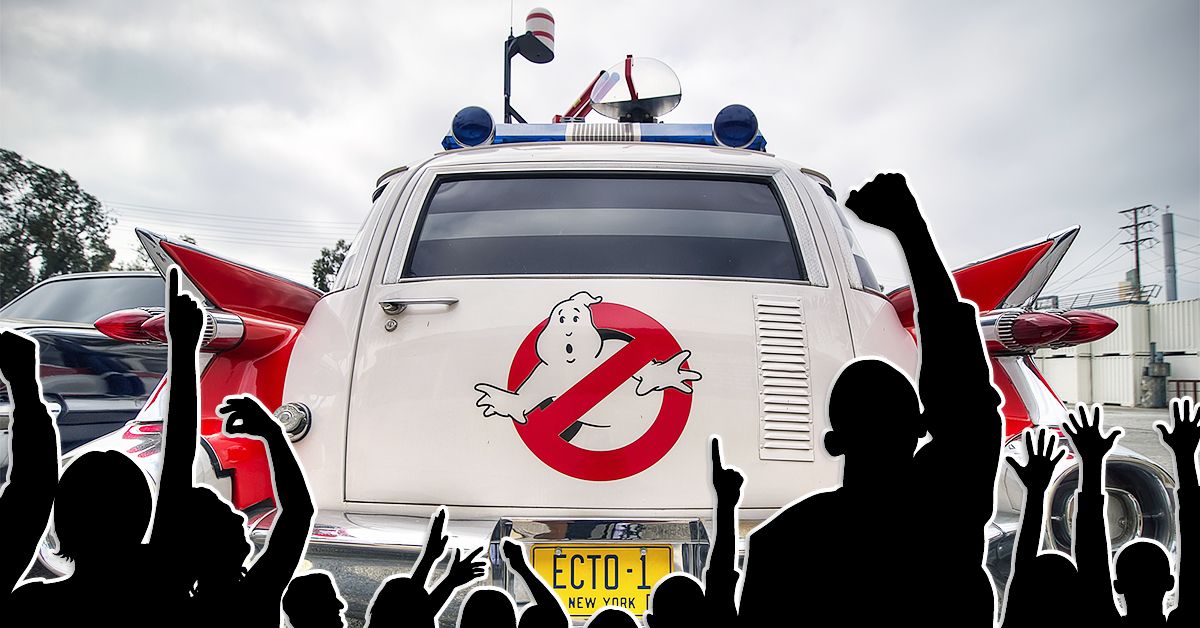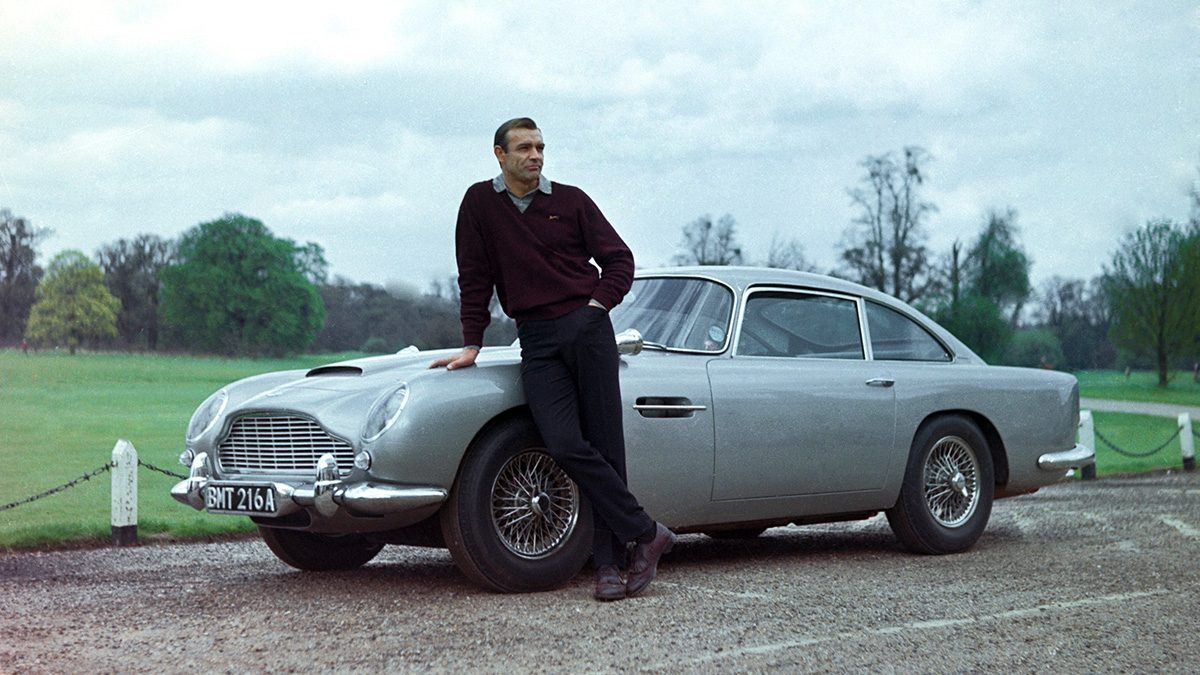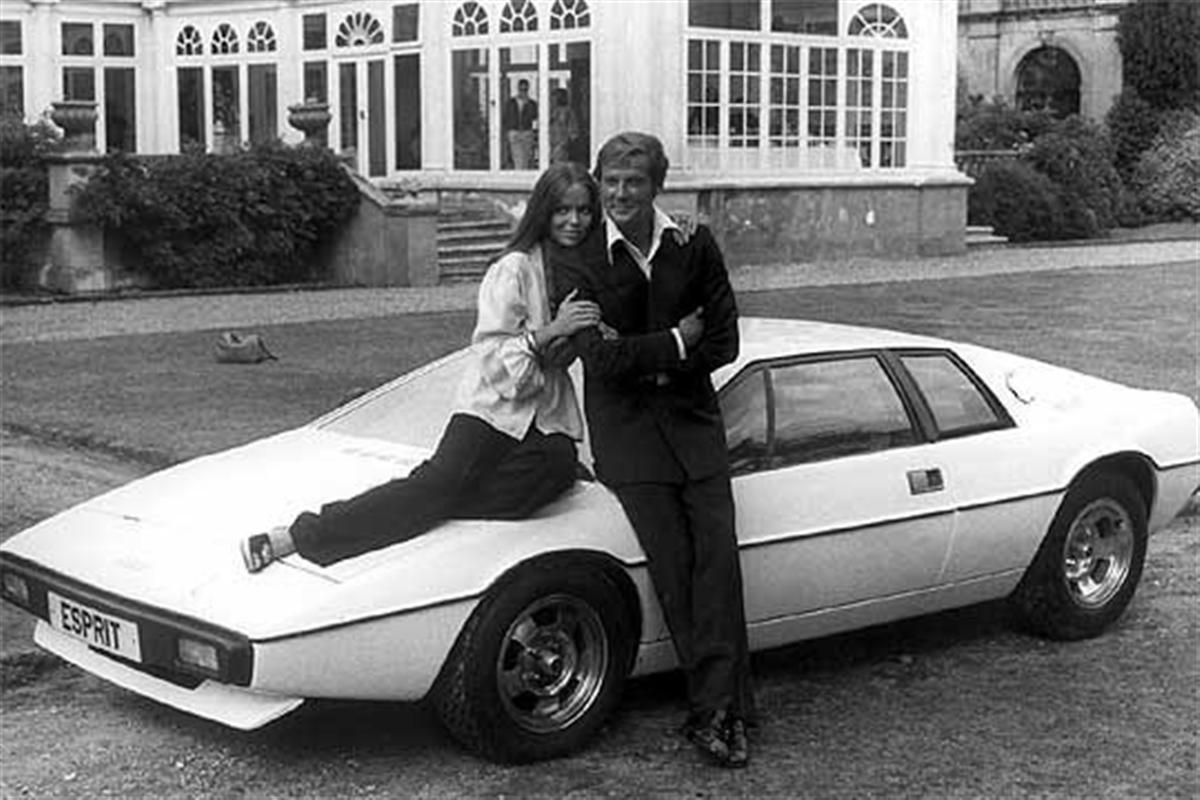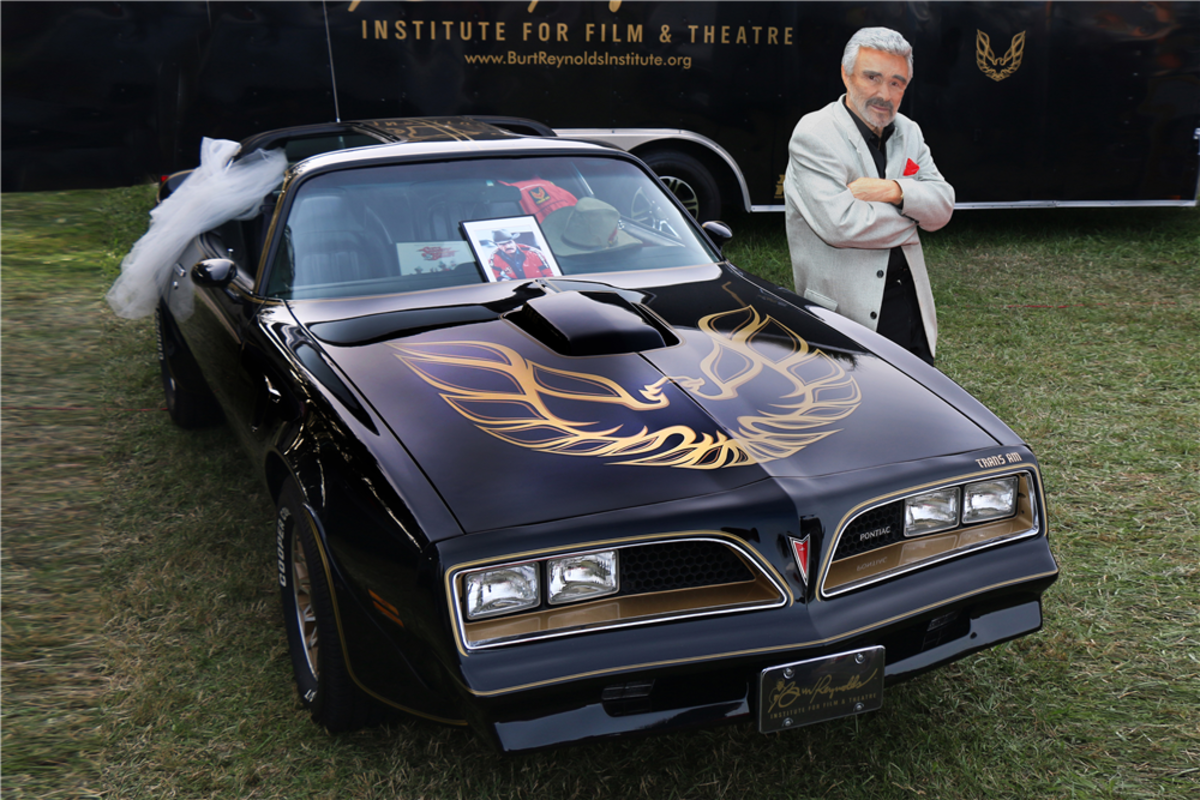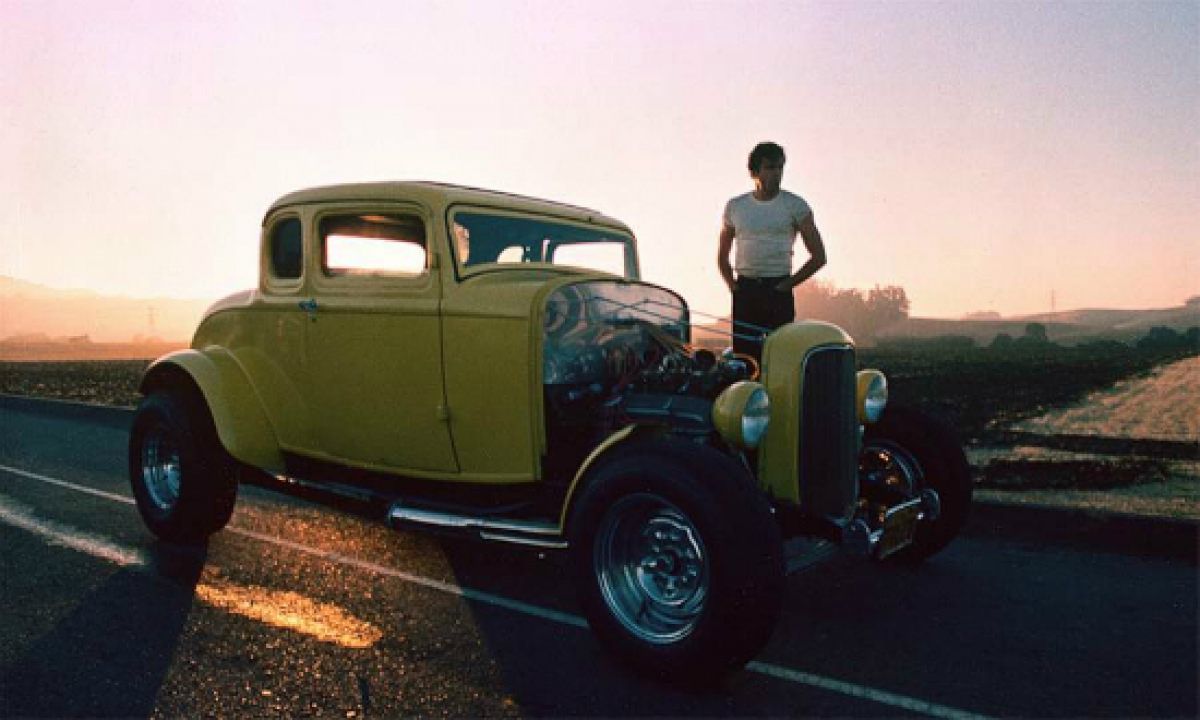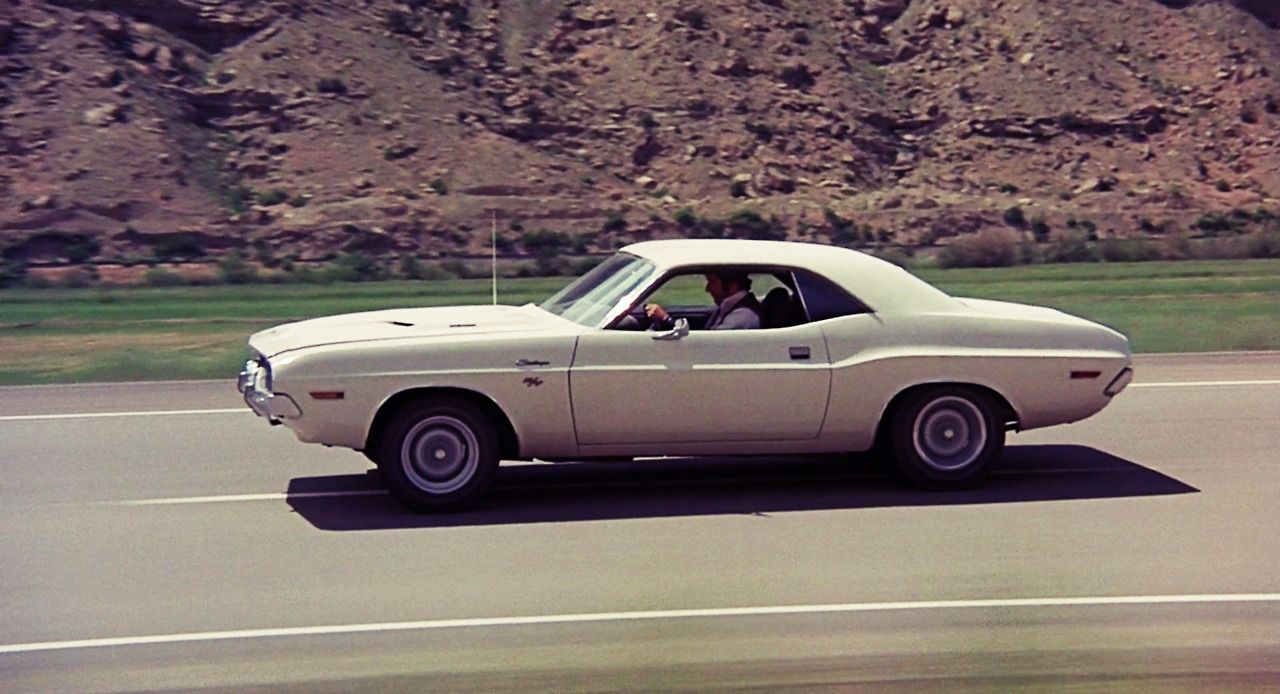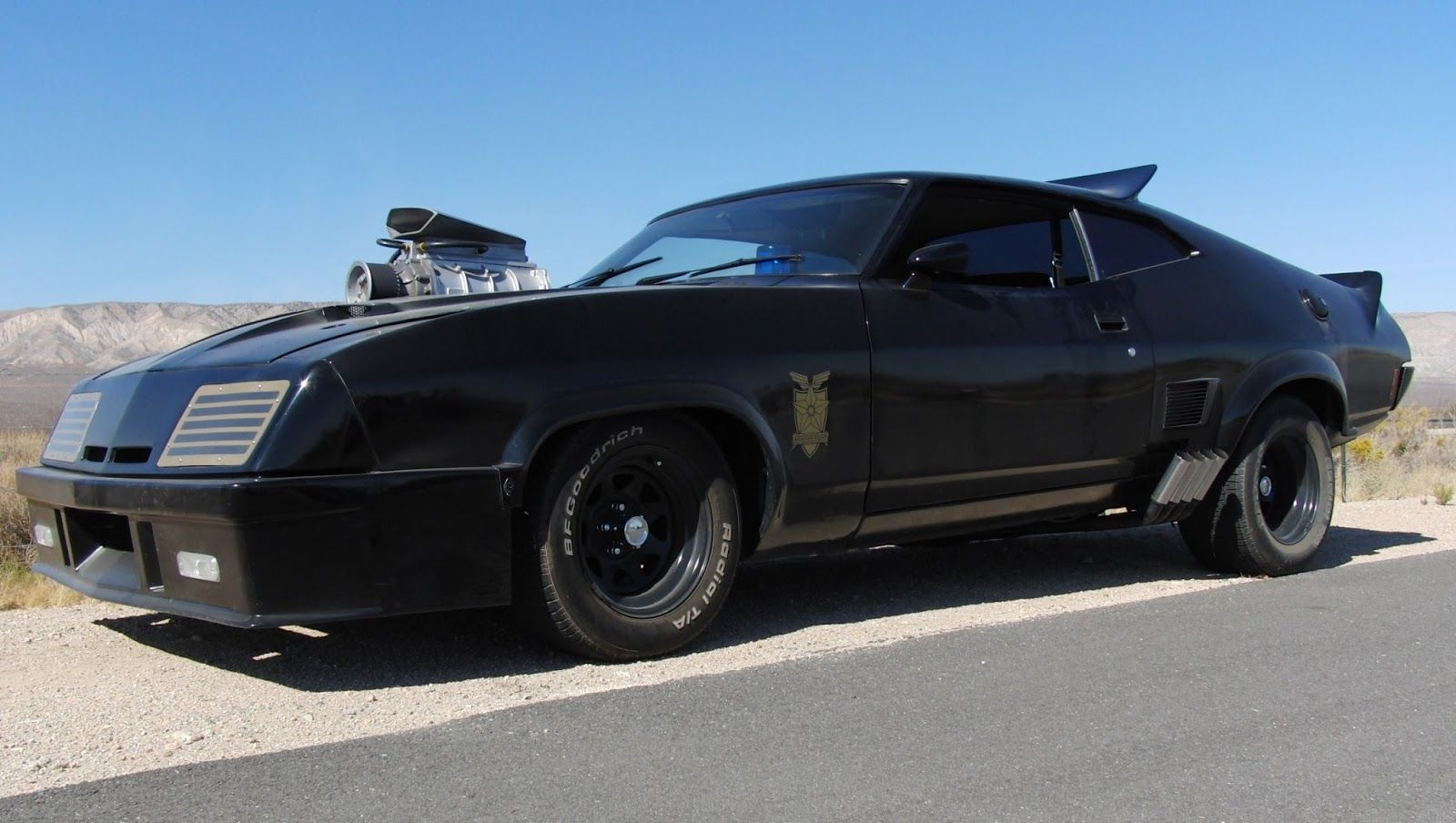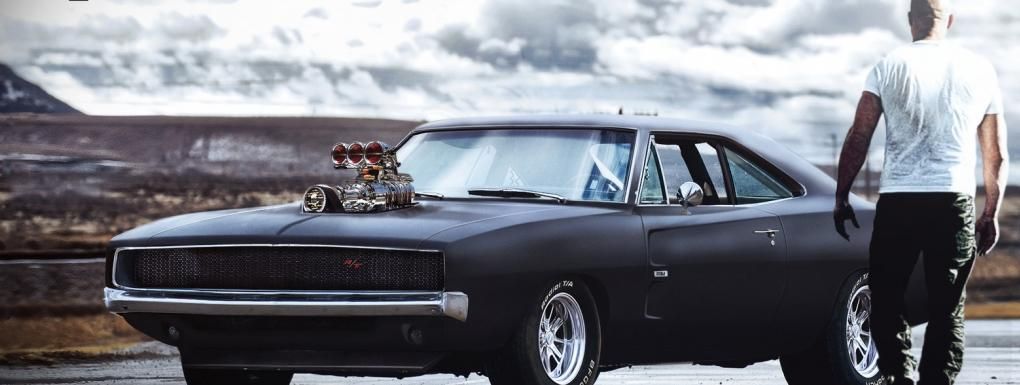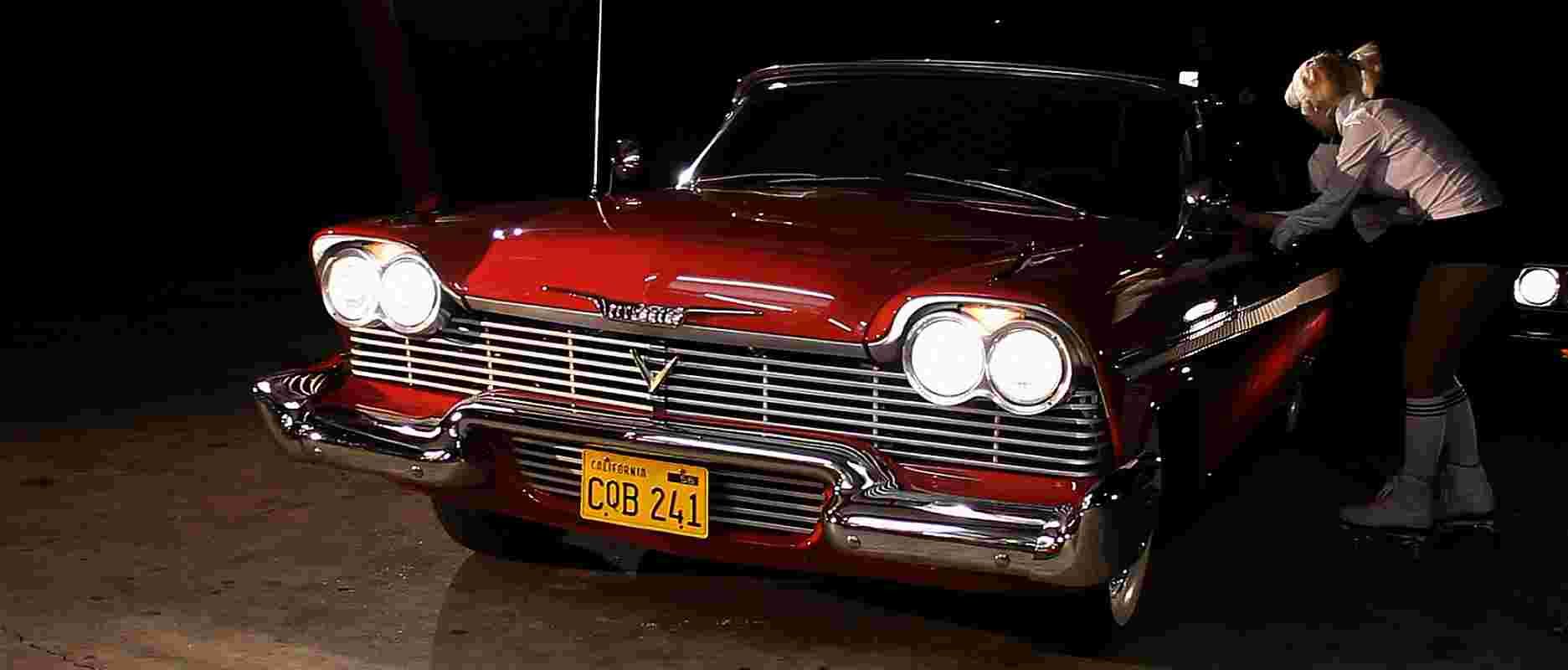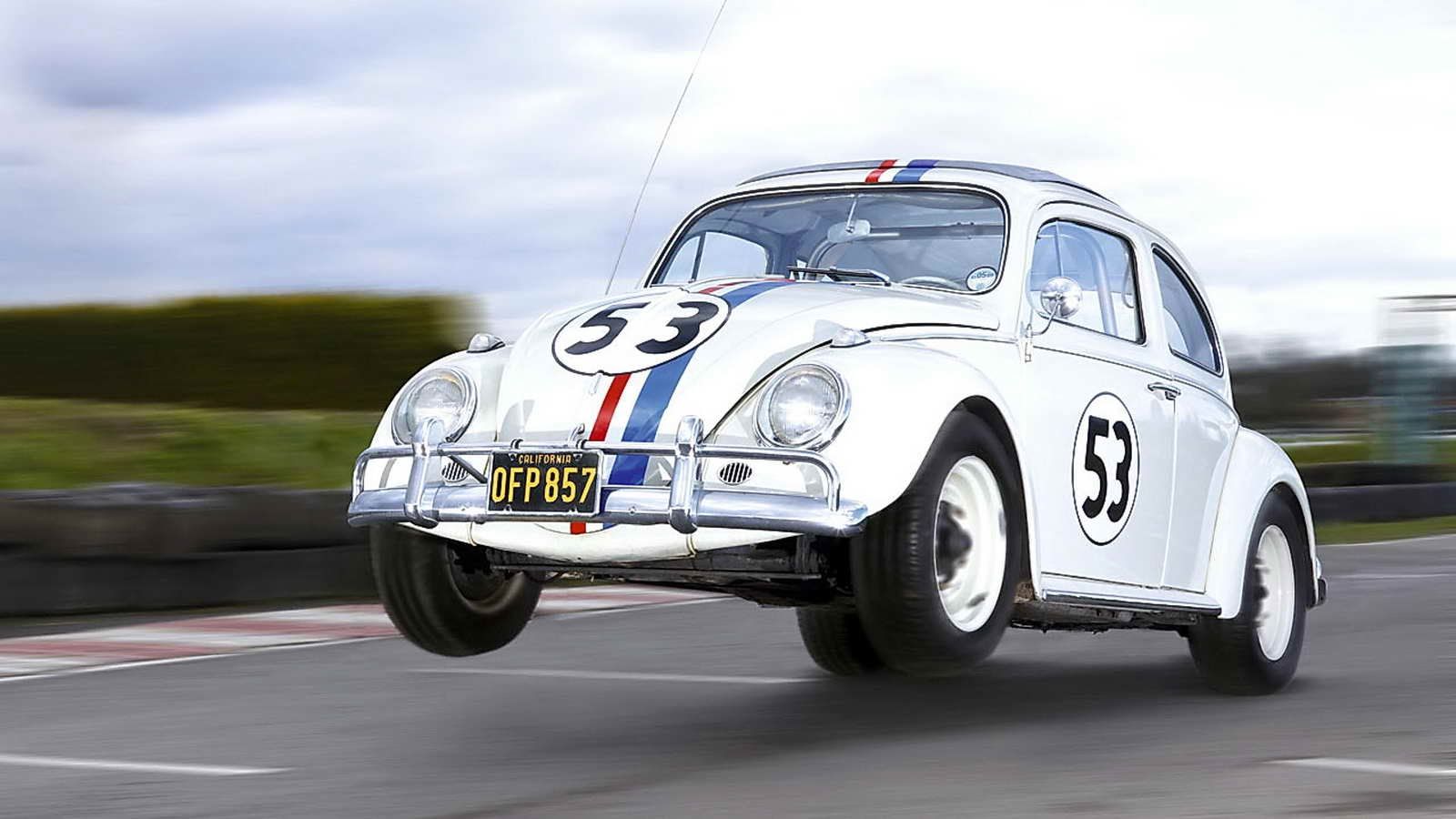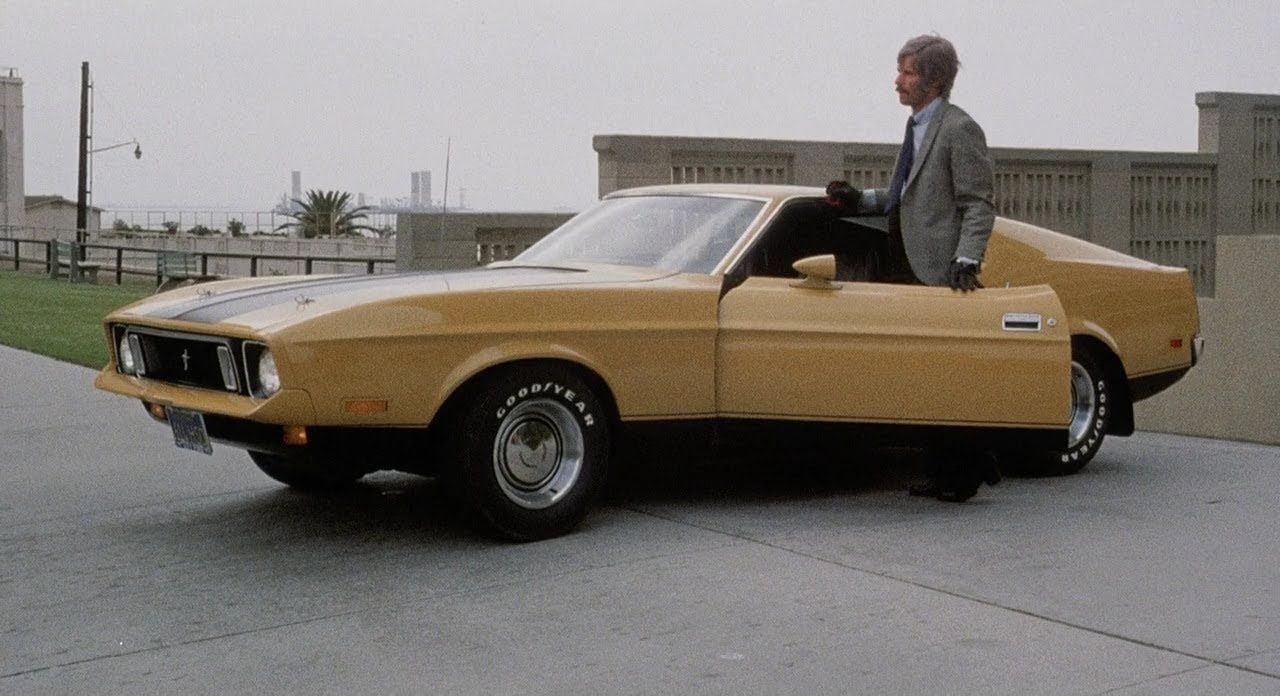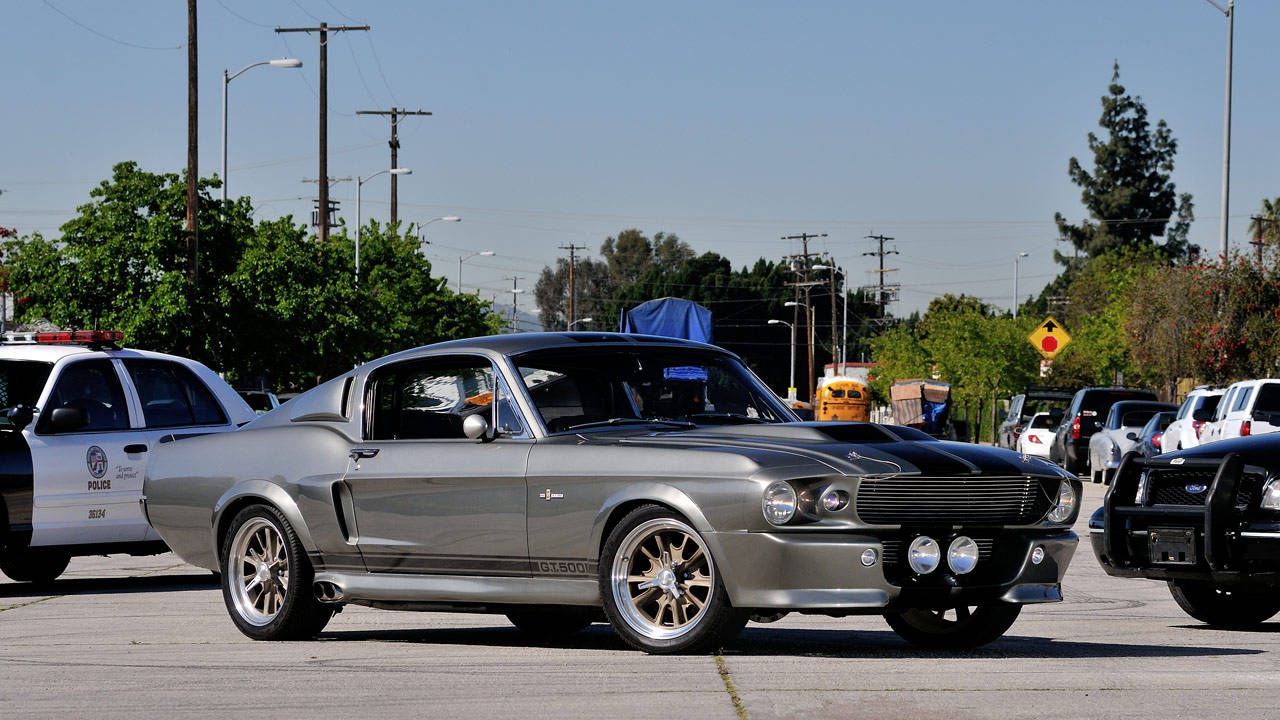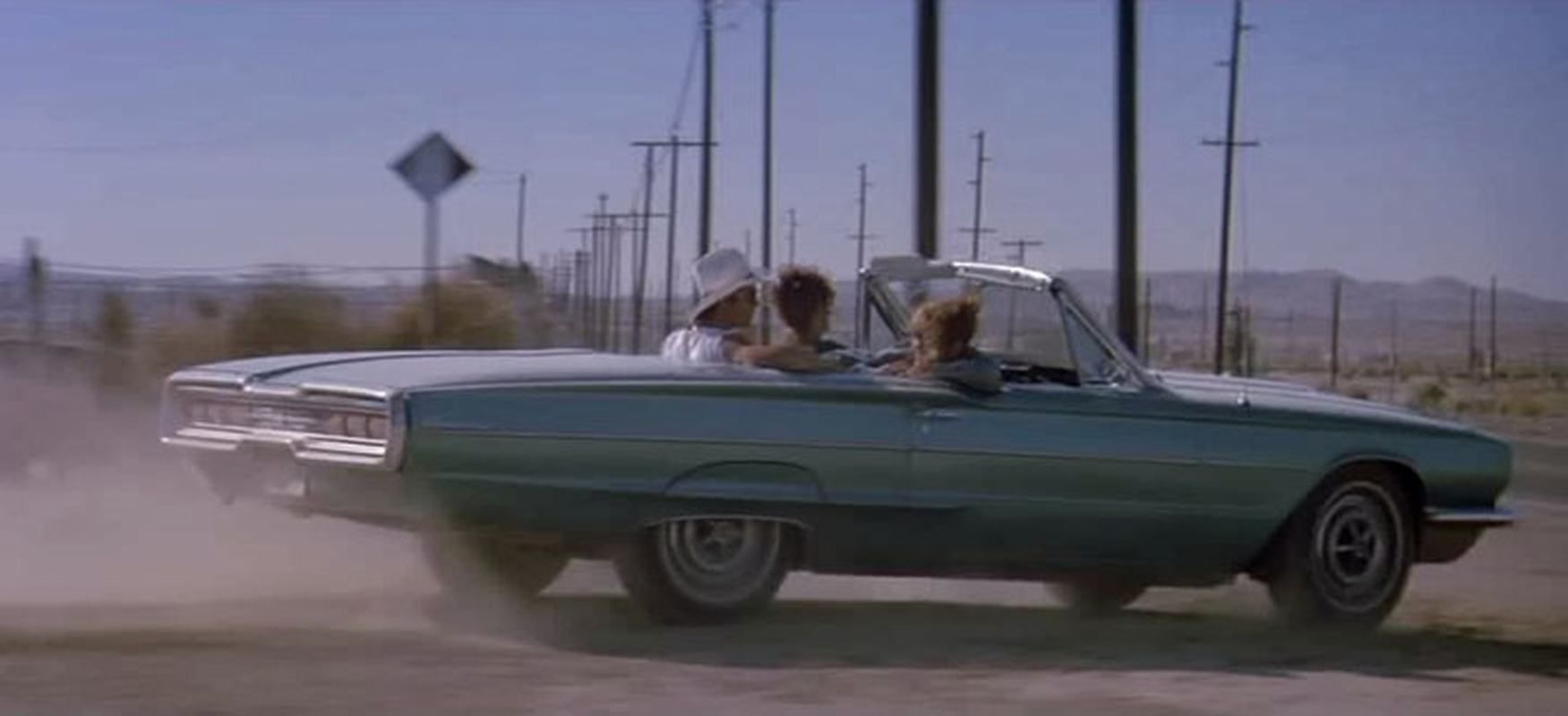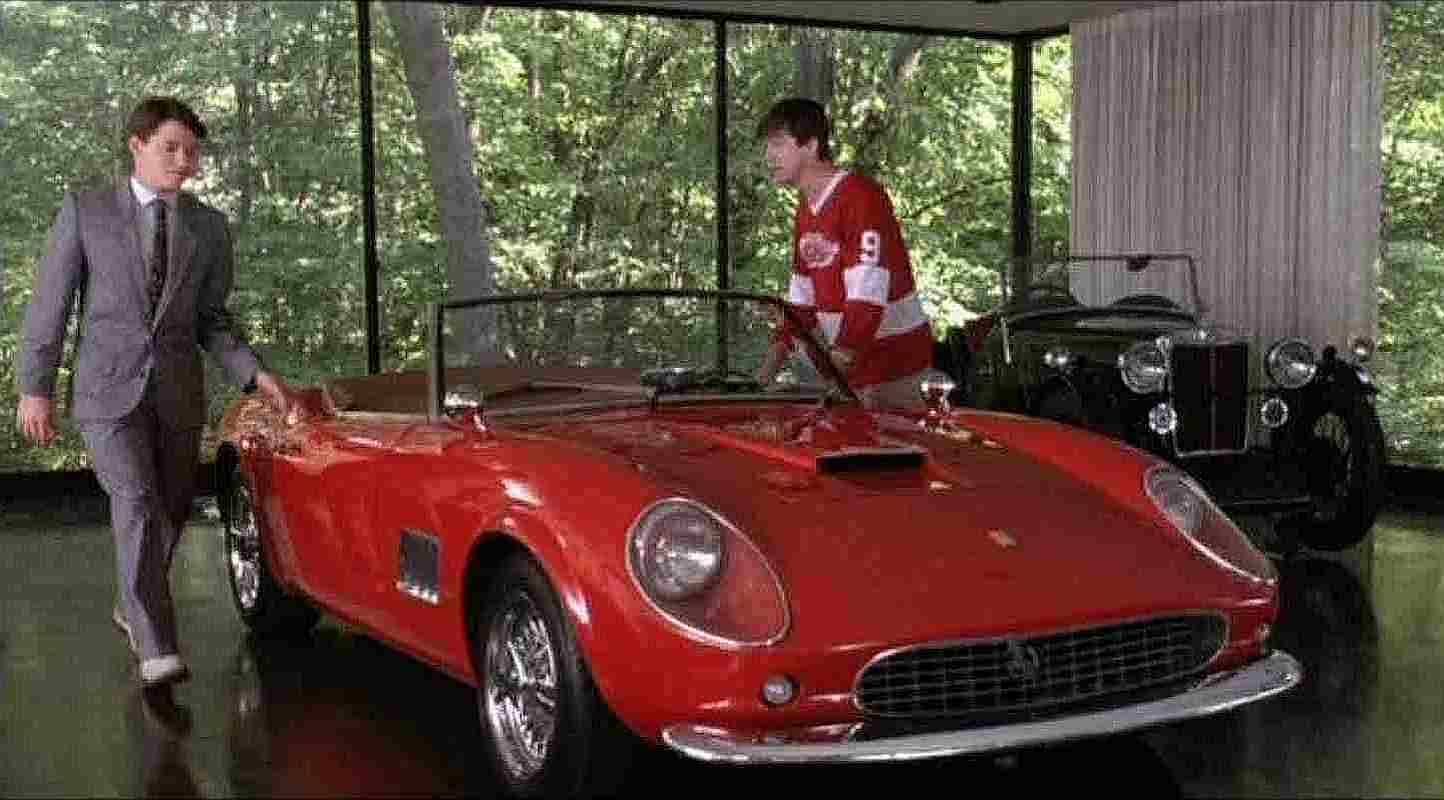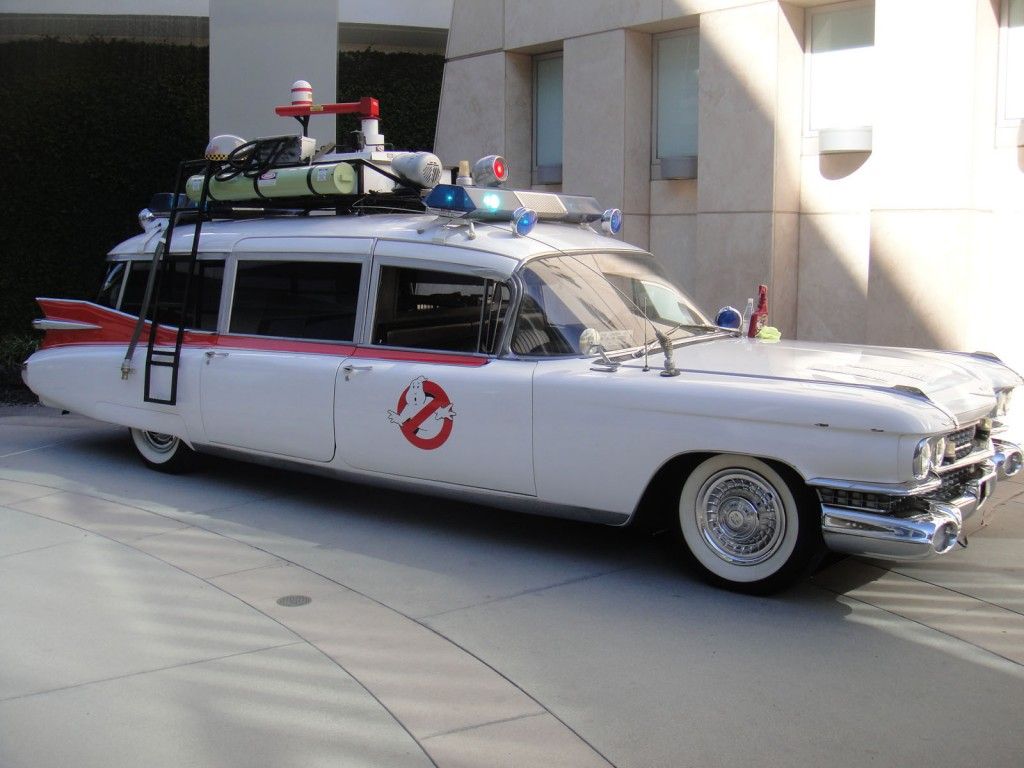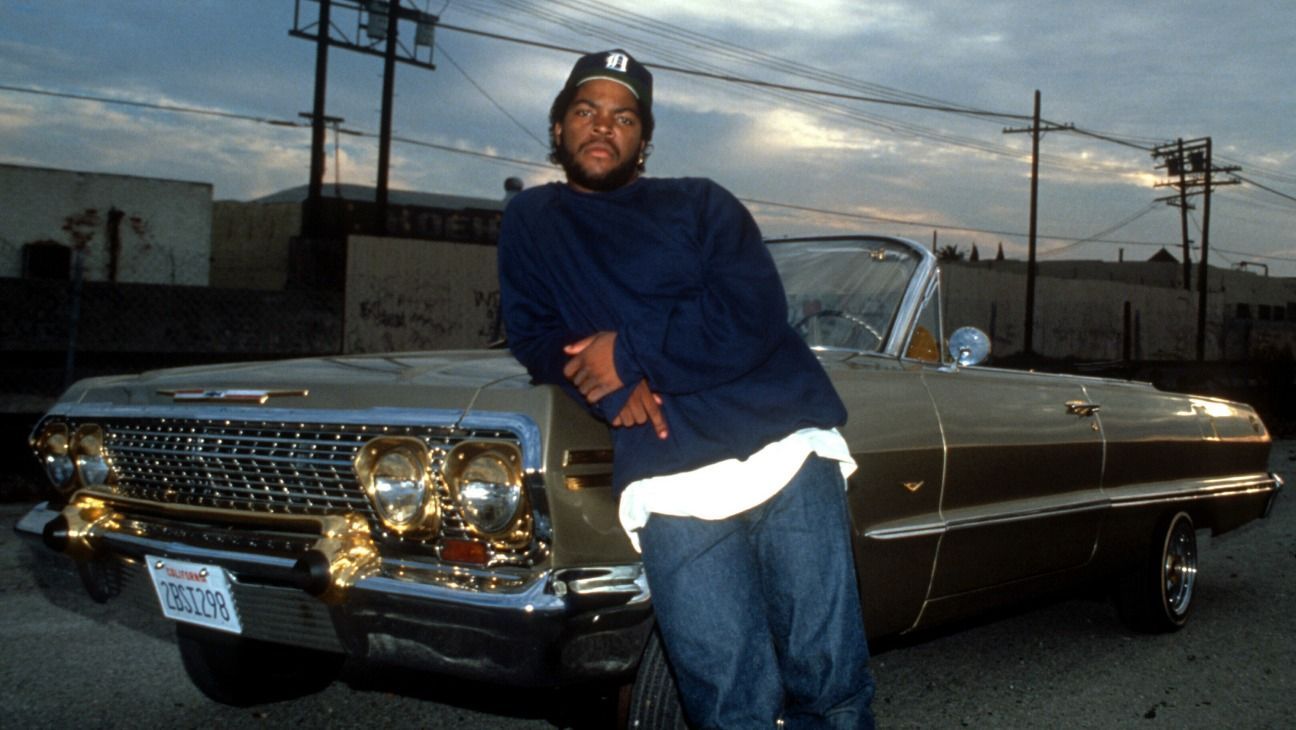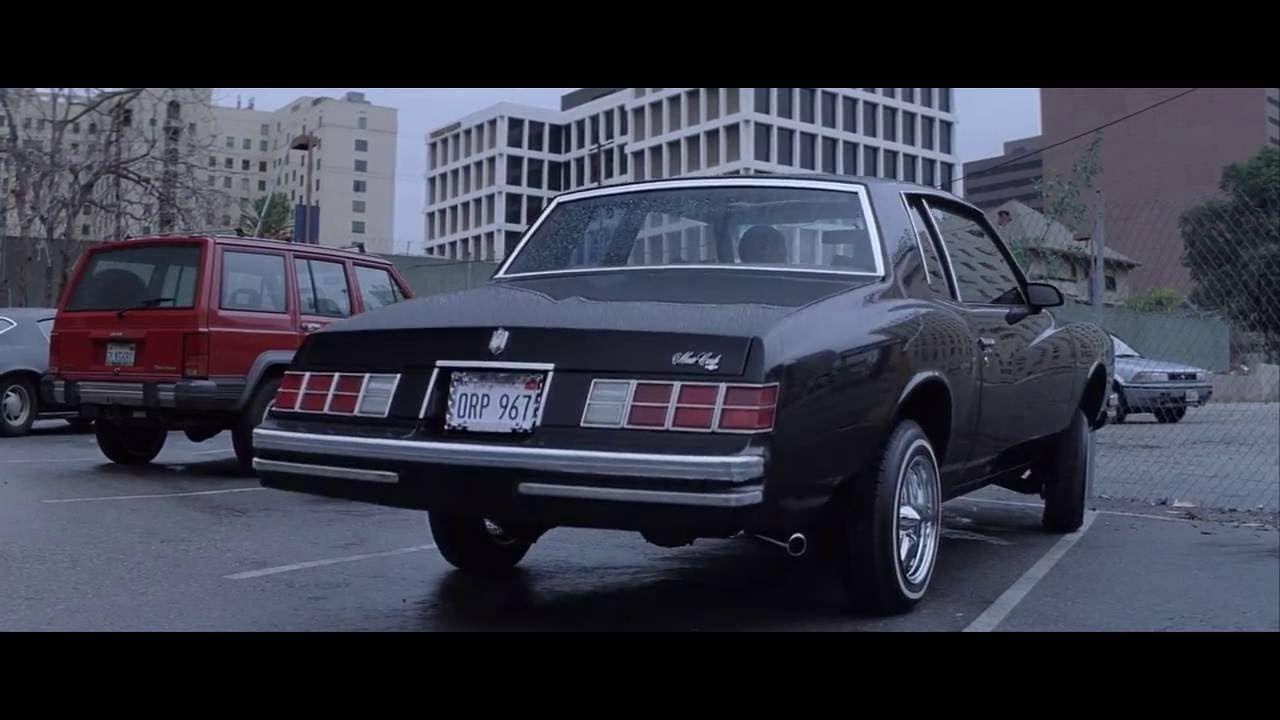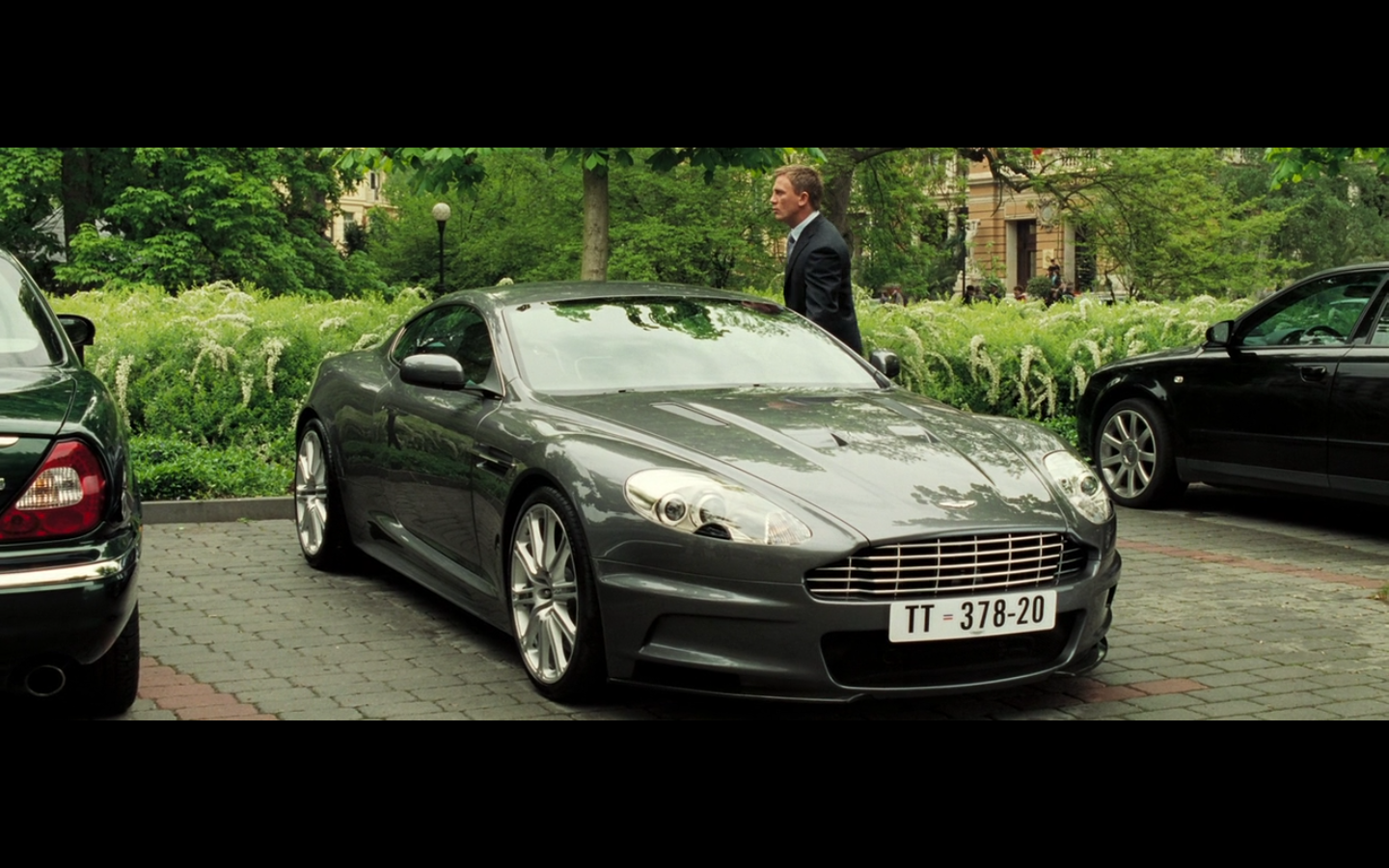Awesome cars and awesome movies go together like peanut butter and jelly. Oftentimes, a cool car is made even cooler by its appearance in a classic film. What would the original James Bond be without his Aston Martin? Or the Dukes of Hazzard without “General Lee,” their 1969 Dodge Charger? There are countless films where the cars become stars in their own right, sometimes even more so than the lead actors.
Other films, like Christine (1983) or The Love Bug (1968) actually use the cars AS their stars, and give them a front and center role. And that’s because many people feel a connection with cars that is almost spiritual—a talking, artificially intelligent car like KITT from Knight Rider or an anthropomorphic car like Herbie almost seem like real people.
Just think about what your favorite car is, and why it is your favorite car. There’s a good chance it’s your favorite car because you saw it in a movie or on a TV show. Whether it’s from an awesome car chase sequence or just a car that you idolized as a child because your favorite actor drove it in your favorite movie, cars have become not just LIKE people, but as important as people. That might sound a bit blasphemous, but I’m sticking with it.
Complex.com put it best when they said, “There’s been no better sidekick in movie history than the automobile.” So without further ado, here are 20 of the most iconic movie cars of all time.
20 1964 Aston Martin DB5 (Goldfinger)
James Bond is known for his legacy of awesome gadgets and suped-up cars, but that whole tradition can be traced back to this one car, the 1963 Aston Martin DB5 that Sean Connery drove in Goldfinger. It was a sweet, sexy piece of art even without the regular Bond modifications, but those just put it over the top. The car’s gadgets included: a ram bumper, machine guns, ejector seat, smoke screen, oil-slick sprayer, a map screen (foreshadowing today’s GPS navigation systems), and more.
The car also skyrocketed Aston Martin as a popular car company worldwide, instantly making their cars desirable. Such is the power of a popular movie featuring one of your cars. It’s better than almost any other publicity out there, having a celebrity drive around in your vehicle. It’s validation. Why do you think they have so many popular celebrities appearing in car commercials these days? Because if your favorite actor seemingly likes a car, the chances of you remembering it when it comes to buy increases. “Hey, didn’t Matthew McConaughey drive this Lincoln in that trippy, nonsensical commercial?” you might tell yourself. And just how popular was this DB5? In 2010, one of the original DB5s used on the set was sold at RM Auctions for $4.6 million.
19 1976 Lotus Esprit Series 1 (The Spy Who Loved Me)
While we’re talking James Bond, might as well bring in another iconic car from the films, this one from The Spy Who Loved Me (1977). This car was one of the first polygonal, “folded paper” wedge designed cars from designer Giorgetto Giugiaro. The ‘70s were a time of new innovations: the curvy shapes of sports cars from the ‘50s and ‘60s were giving way to new, distinctive body styles, like this futuristic wedge design.
In The Spy Who Loved Me, James Bond takes the pedal to the metal, and then the pedal to the… ocean...as he jumps the car into water. The Esprit grows stabilizer fins and props, and turns into a fully functioning submarine. When he drives it back onto the beach, it morphs back into a car, stunning onlookers. It was quite a pivotal moment for Lotus as a car company, helping push their sales and production numbers. Between 1978 and 1981, the 1,061 Esprits were produced, following the movie, and another 3,500 were made from 1980 to 1987. Also, the futuristic design and events in the film caught the eye of another futurist: Tesla creator Elon Musk. The car, nicknamed “Wet Willie” was bought by the billionaire businessman in 2013.
18 1977 Pontiac Trans Am (Smokey and the Bandit)
The Pontiac Firebird is a car that was produced between 1967 to 2002, originally as a pony car to compete with the Ford Mustang. The Trans Am was a specially packaged Firebird, with upgraded handling, suspension, and horsepower, as well as some minor changes to its hoods, spoilers, fog lights, and wheels. It was produced in four distinct generations between 1969 and 2002. Smokey and the Bandit director Hal Needham chose a 1977 Pontiac Trans Am to star alongside Burt Reynolds and Sally Field, not knowing the impact the car would have on America.
When audiences saw the Trans Am sliding around corners in the film, leaping over broken bridges, and evading Jackie Gleason for miles and miles, everyone wanted a black and gold Trans Am in their garage.
Following the movie’s debut, sales jumped by about 30,000 cars between 1977 and 1978, then another 24,000 in 1979. The Starlight Black Special Edition paint job was the version everyone wanted, with the T-Top roof. It also didn’t hurt that the car was quicker and had better handling than the Corvette of the same generation. Thanks to those facts, and the star appeal of Burt Reynolds, the Trans Am became a legend and the best seller for Pontiac.
17 1932 Ford Coupe (American Graffiti)
Four years before George Lucas would shoot to superstardom with the arrival of Star Wars: A New Hope, the director wrote and directed a comedic coming-of-age film called American Graffiti, which was a reflection of his memories of the car culture in California in the 1960s. The car included superstars such as Ron Howard, Richard Dreyfus, and Harrison Ford (where would we see him again?) and some absolutely awesome cars.
The most recognized vehicle in the movie, however, is undoubtedly the “Deuce Coupe,” a canary-yellow 1932 Ford highboy. It was powered by a Chevy 327 V8, and is pitted in a climactic drag race on Paradise Road against an aggressive looking 1955 Chevy (the former driven by John Milner, the latter by Harrison Ford). The Ford destroys the Chevy right out of the gates, and halfway through the race the Chevy flies off the road, flips, and explodes. It was an astounding special effects scene for the time (though Star Wars might take that to the next level a few years later). And the ’55 Chevy driven by Ford? It would appear in another movie classic later on, painted a flat gray color in another iconic car movie, Two Lane Backtop.
16 1981 DeLorean DMC-12 (Back to the Future)
The DeLorean DMC-12, referred to simply as “the DeLorean” because it was the only car ever produced by the company, was a sports car that was available from John DeLorean’s Motor Company between 1981 and 1983. It actually wasn’t even that fast or reliable, but don’t tell diehard Back to the Future fans that. The DMC-12 was immortalized in the hugely popular Back to the Future franchise, which sold the car better than any advertisement could have.
It was so popular that in 1995, a British entrepreneur named Stephen Wynne, created a Texas-based company called “DeLorean Motor Company” (DMC), and in 2016 he announced a plan to build 300 to 325 replica DMC-12 cars, each to cost just under $100,000, for nostalgia’s sake.
The DMC-12 was designed by legendary carmaker Giorgetto Giugiaro, though it wasn’t as flashy under the hood as the film made you believe. It carried a 130-hp 2.9-liter V6, and no time machine. But when Marty McFly hit 88 mph and fired up the Flux Capacitor to shoot back to 1955, a generation of moviegoers and car enthusiasts fell in love. Strangely enough, the car flopped in the 1980s, despite the movie’s celebrity status. It’s a good thing, then, that Stephen Wynne came around to restore and improve the cars.
15 1968 Ford Mustang GT 390 (Bullitt)
Steve McQueen was the King of Cool in his day. Any car he drove or stood next to instantly became cooler because of his presence. And that’s saying a lot for a car that was already pretty dang cool. The Highland Green 1968 Ford Mustang GT 390 was a beast of a car, taking the most popular car in America at the time to the next level. This was the car that created the new class of automobile known as the pony car. The first generation Mustang, with its long hood and short deck, was wildly popular and influential in future car developments.
Bullitt was a detective story starring McQueen, and by far the most memorable part in the movie was the awesome, groundbreaking car chase with McQueen in the forefront, driving the Mustang GT 390 around corners and at top speed for a long, long time, with a 1968 Dodge Charger behind. The chase, which took place on the streets of San Francisco, is one of the most iconic car chase sequences in film history, and the stripped-down, mean-looking Mustang only made it that much better. The scene was so iconic that Ford even made a limited edition version based on the film, called the Bullitt Mustang.
14 1970 Dodge Challenger R/T (Vanishing Point)
The Dodge Challenger was another iconic pony car made in the footsteps of the Ford Mustang, so that Dodge could compete with the most popular car in America. The first generation Challenger only lived from 1970 to 1974, but it made quite a splash during that time. And one way the car made a splash was by appearing in the 1971 film, Vanishing Point. The Hemi model Challenger R/T was already one of the most impressive pony cars to come out of the late ‘60s and early ‘70s muscle boom, but its reputation was cemented after appearing in the film.
The same team that put together Bullitt put together Vanishing Point—whose plot is simple: Kowalski (Barry Newman) bets that he can drive from Denver to San Francisco in less than 15 hours, which would require an average speed of 80 mph. And a Challenger R/T. And a Jaguar XKE. And plenty of stunts. One glaring mistake in the film is that in the final crash that destroys the car, the filmmakers actually used a ’67 Chevy Camaro, rather than a Challenger. But we’ll let that slide—maybe they just thought the Challenger was too cool of a car to destroy.
13 1973 XB GT Ford Falcon (Mad Max)
In the 1960s and 1970s, American car companies created some of the most brutal muscle cars in the world. Little did they know, Australia was doing the same thing, but they were creating even crazier cars down under—cars that never made it to the States. One of those was the Ford Falcon (completely different than the 1960-70 American Ford Falcon. Through seven generations, the Australian-made Ford Falcon was the best-selling car on the continent, with over 3,000,000 sales until 2003, exclusively in Australia, New Zealand, and South Africa.
The XB Falcon was introduced in 1973 as “The Great Australian Road Car,” and it was also in the 1979 George Miller dystopian action film, Mad Max. For the movie, the filmmakers transformed the awesome XB Falcon into the “Pursuit Special” or “Interceptor.” The crew gave it a new nose on the front end, an emblazoned body with huge flares, and some big, fat tires underneath it. The centerpiece was sticking out of the hood, with switch-activated supercharger boosts for any time when Max needed to hit the road. The supercharger was fake, but the awesomeness of the XB Falcon certainly wasn’t. It was a car made iconic because of the movie, and a movie made iconic (partly) because of the car.
12 1970 Dodge Charger (The Fast and the Furious)
The Fast and the Furious kicked off a franchise whose runaway success no one saw coming. And in the first film that started the craze off, the most popular and coolest car in the entire movie was arguably the Dominic Torreto’s 1970 Dodge Charger. The 1968-70 Charger was already a TV and movie superstar. A ’69 Charger appeared most famously as “General Lee” in The Dukes of Hazzard TV show. Then another one starred in the ‘70s cult hit, Dirty Mary Crazy Larry.
But in 2000 the Charger hit the big screen once again, this time as a menacing, matte-black racing machine driven by Vin Diesel. With giant rear tires, a huge engine and supercharger, and a wickedly aggressive look, the Charger was brought to life once again.
The climactic action scene where Diesel’s character races Paul Walker’s makes the car memorable. During the scene, when Walker floors his Supra, Diesel floors his Charger and the car does a wheel-stand and burnout at the same time, and then later on jumps a set of train tracks just as the train passes, until Diesel flips the Charger in a memorable finish just moments later. It was a new Charger for a new generation of car lovers, and The Fast and the Furious did it justice.
11 1958 Plymouth Belvedere (Christine)
The Plymouth Belvedere was a new hardtop car produced between 1954 to 1970 by Plymouth, replacing the Cranbrook with a full line of sedans, station wagons, and convertibles. It was Plymouth’s full-sized car until 1965, when it became intermediate, and was eventually replaced in 1970 by the Satellite. The red Belvedere was featured in the 1983 film Christine, a psychological horror film by John Carpenter, based on the novel of the same name by Stephen King.
In the film, a sentient and violent vintage Plymouth Fury goes on a rampage and effects its new teenage owner. The Fury introduced in ’56 as a sub-series of the Belvedere, until it became its own car in 1959. It was a great car to use as an automobile with homicidal tendencies, because it looked sleek and mean at the same time. Christine the car was considered an “automotive femme fatale from Hell.” It also makes sense that the car would be called a “Fury,” meaning anger, to take part in the frightening love triangle that made up the plot of the movie. It was truly a one of a kind car for a one of a kind movie, and though the movie received a pretty poor reception, it has become a cult classic since its original 1983 debut.
10 1963 Volkswagen Beetle (The Love Bug)
The original Volkswagen Beetle, also called the Volkswagen Type 1, was a small economy car built between 1938 and 2003, and was one of the most influential cars in the world. It was formulated by the leader of the Nazi party, Adolf Hitler, who wanted a cheap, simple car to be mass-produced for his country’s new road network. And though it has a tragic genesis, perhaps that is why its introduction as the antithesis of hate—as Herbie in The Love Bug—made it so special.
While Christine was shown as an evil, killer autonomous car, Herbie was a lovable anthropomorphic car with a big personality.
The Disney film was released in 1968, during the height of the counterculture movement, which is probably why a self-thinking, self-driving, self-racing car seemed like such a great idea at the time. And it was. The car was so popular with audiences that it was featured again in again, and was made into a very successful franchise. The other films included Herbie Rides Again (1974), Herbie Goes to Monte Carlo (1977), Herbie Goes Bananas (1980), a television film remake of The Love Bug (1997), and a dismal reboot starring Lindsey Lohan in Herbie: Fully Loaded (2005).
9 1973 Ford Mustang Mach 1 (Gone in 60 Seconds, 1974)
The Ford Mustang Mach 1 was a performance-oriented option package of the original Ford Mustang, produced between 1969-1978, 2003-2004, and 2018 to the present. The 1973 Mach 1 shown here was introduced in the last year of the second generation, with three different V8 engine units offering between 140 and 266 bhp. The Mach 1 has been featured in numerous films over the years: A ’71 Mach 1 appeared in the James Bond film Diamonds Are Forever (1971). A ’73 model appeared in the 1990 Steven Seagal film Marked for Death, and the John Wick movies, and perhaps the most famous example, as Eleanor in the original 1974 film Gone in 60 Seconds.
The yellow ’73 Mach 1 featured in the film may have seemed modest with the name of Eleanor, but it was anything but. This car (which was actually a 1971 Mach 1 with a 1973 front clip) was the crown jewel of the 48 cars H.B. Halicki has been hired to steal. The car sustained multiple crashes during filming of the famous 34-minute car chase scene (which is infamously known for wrecking 93 cars in a single chase scene), but this baby still survives and runs today.
8 1967 Shelby GT500 (Gone in 60 Seconds, 2000)
Speaking of Gone in 60 Seconds, while the original movie was undoubtedly better than the 2000 remake, that doesn’t mean the remake didn’t include some really cool cars of its own. One of those cars was the 1967 Shelby GT500. Fast forwarding 26 years from the first film. This time the movie centers around Nicolas Cage playing opposite Angelina Jolie, as they attempt to steal 50 cars for a British gangster holding Cage’s brother for ransom. And the crown jewel of that heist is, once again, Eleanor. Though this time Eleanor is a 1967 Shelby GT500.
The Shelby GT500 was a Ford Shelby Mustang equipped with a “Ford Cobra” V8 engine with two 600 CFM Holley four-barrel carburetors sitting atop a mid-rise aluminum intake manifold. This was a heavier Mustang, with a longer fiberglass hood and a new front and rear. The car had a noticeably more aggressive appearance, which achieved Carroll Shelby’s goal of differentiating his car from the Mustang on which it was based. Its 7.0-liter V8 engine produced about 335 horsepower, and much of the car was made of fiberglass, including the front-end, hood, rear tail light panel, deck lid, quarter panel extension, and side scoops. Only 2,048 of these were produced in 1967.
7 1966 Ford Thunderbird (Thelma & Louise)
The Ford Thunderbird is noted for being the car that created the niche market of “personal luxury cars.” Before the Thunderbird, that market didn’t exist. It was manufactured for 50 years and 11 generations in the United States, between 1955 and 2005. The car began as a sporty two-seat convertible, like the Chevy Corvette, but it wasn’t marketed as a sports car. It was marketed as an upscale model, gained two rows of seats in 1958, and became larger and larger until 1977. By then, it was the first “personal luxury car.”
A 1966 Ford Thunderbird appeared prominently in Ridley Scott’s 1991 film Thelma & Louise, starring Geena Davis and Susan Sarandon. The film is about two friends who embark on a road trip with terrible, unforeseen circumstances.
The cast included Harvey Keitel, Michael Madsen, Brad Pitt (whose career was launched by the film), and this beautiful ’66 Thunderbird, who is with the pair of women until the sweet, bitter end. The film received glowing reviews and six Academy Award nominations, including Best Original Screenplay, which was won by Callie Khouri. Both the actresses were nominated, as well as director Ridley Scott. And the only thing that could keep up with the untamed intensity and charisma of the two leads was this classic ’66 Thunderbird convertible.
6 1961 Ferrari 250 GT California Spyder SWB (Ferris Bueller’s Day Off)
The Ferrari 250 is a classic sports car that was built between 1953 and 1964, with several variants during those years. One of those variants is the 250 GT California Spyder SWB, which, despite being a mouthful, was an absolutely beautiful and iconic car. It was based on a ’59 Ferrari 250 GT Berlinetta, but with sharper handling and a reduced wheelbase. Its body was more taut over an updated chassis, and it was fitted with a 276-hp 3.0-liter V12 engine.
Unfortunately, we never really got to see this beautiful car in action during its debut in the 1986 cult classic Ferris Bueller’s Day Off. The car shown in the film (before being shoved through a window and destroyed), was actually a custom-built fiberglass-bodied replica of a ‘61-63 250 GT California Spyder. Three 1985 Modena Spyders (two running and one shell) were built for the film by Modena Design & Development, on custom frames. One of the running models was sold back to Modena for restoration and in April 2018 became the 22nd vehicle added to the National Historic Vehicle Register. Another 1961 SWB was sold in 2015 for $15.9 million, and a third was sold at the 2016 Omni Amelia Island Plantation auction for $17.16 million, making this one of the most expensive cars ever sold at auction.
5 1959 Cadillac Hearse (Ghostbusters)
A hearse is a vehicle used to carry a coffin or casket. They range from anonymous vehicles to formally decorative vehicles, and in most instances they are Cadillacs or Lincolns. The Cadillac Commercial Chassis was a longer and stronger version of the long-wheelbase Fleetwood limousine frame, used to carry extra weight (such as coffins). The fleet division of Ford also sells a Lincoln Town Car with a special “hearse package,” though the classic hearse shown in Ghostbusters was of the Cadillac variety.
This car, called the Ecto-1, was the car used when the Ghostbusters were first starting out and needed to cut a few financial corners to get their ghost-hunting business off and running. So they invested in a dusty firehouse as their headquarters and had to settle for this ’59 Cadillac hearse as their work vehicle. With that being the case, Ghostbusters quickly became a classic (with a recent all-female reboot released in 2016), and the Ecto-1 became iconic. The 1984 film began as a project between Saturday Night Live alumnus John Belushi and Dan Aykroyd, until their vision was realized by director and producer Ivan Reitman. It would spawn a media franchise, and has been ranked as #28 in AFI’s 100 Years… 100 Laughs list of film comedies.
4 1966 Alfa Romeo Series 1 Spider 1600 (The Graduate)
The 1966 Alfra Romeo 1600 Spider Duetto was a beautiful roadster produced by the Italian manufacturer Alfa Romeo between 1966 and 1993. It remained in production for almost three decades with hardly any technical or aesthetic changes. This first-year, first-generation model was designed and assembled by Pininfarina. The “Duetto” or Roundtail ran a 108-hp Twin Cam I4 engine.
The car was of course given widespread visibility when it was featured in the 1967 film, The Graduate. After the film, a “Graduate” trim level was marketed in the United States in the 1980s. Many people credit Dustin Hoffman with making the Spider 1600 a lusted after car—when all he basically did was use the car to bed his teacher. The film is based on a novel of the same name by Charles Webb, and follows a protagonists coming-of-age story into adulthood by graduating college, being seduced by an older woman (Mrs. Robinson), and then falling in love with her daughter. The film is the 22nd highest-grossing film of all time in the U.S. and Canada. It’s been placed for preservation in the U.S. National Film Registry, and was ranked #7 in AFI’s 100 Years… 100 Movies list in 1998, and then in #17 in a revised list from 2007.
3 1964 Chevrolet Impala (Boyz n the Hood)
By the time the Chevy Impala showed up in Boyz n the Hood, it was Chevrolet’s most expensive passenger model and had become the best-selling car in the United States. The big Impala was restyled at the end of the third generation in 1964, with a rounder, softer look. But that “softer” look didn’t make it very soft in Boyz n the Hood, a 1991 teen hood drama film starring Ice Cube and Cuba Gooding Jr. It was directed by John Singleton and was his directorial debut.
The movie was filmed in South Central Los Angeles and was nominated for both Best Director and Best Original Screenplay at the 64th Academy Awards, making Singleton the youngest person ever nominated for Best Director (he was 22), and the first African-American to be nominated for the award.
In the film, the topless, gold ’64 Impala had all the switches and gold 10-inch rims. It provided enough room to carry Doughboy’s crew, and it made a statement at local meetups (and in real life). It was an awesome car for an awesome movie, and the perfect fit for Ice Cube and his crew, allowing him to do his Jheri Curl wave in the air with the top down.
2 1979 Chevrolet Monte Carlo (Training Day)
The Chevy Monte Carlo was a two-door coupe first manufactured between 1970 and 1988, then again in 1995 to 2007. The car encompassed six generations, and went through multiple body and style changes. The car was first introduced as a personal luxury car (remember the Thunderbird?), and the third-generation 1979 model was powered by a 200 CID V6 engine with 125 hp. A black ’79 Monte Carlo was used by Michael Platt and William Matix during the 1986 FBI Miami Shootout.
It wasn’t a particularly cool car, but boy did Denzel Washington make it his own in 2001’s Training Day. In the film, a black ’79 Monte Carlo was modified to a lowrider, and used as Detective Alonzo Harris’ “office.” When a crooked cop wants to look like a bada*s but lowkey at the same time, it seems that a clean, blacked out ’79 Monte Carlo was the answer. It sported 13-inch rims, could be raised and lowered on command, and most of all, it made a statement for the detective. It’s a good thing the car was shown so prominently in the film, otherwise the ’79 Monte Carlo might have forever been marred as the car used during the 1986 Miami Shootout.
1 2007 Aston Martin DBS V12 (Casino Royale)
Bringing the article full circle, we return back to James Bond and Aston Martin. The Aston Martin DBS was a super grand tourer based on the DB9, manufactured between 2007 and 2012. It was named after the 1967-72 grand tourer of the same name (but without the V12), and replace the 2004 Vanquish S as Aston Martin’s flagship model. It was an awesome, sleek car, with a 5.9-liter V12 engine producing 510 bhp and a top speed of 191 mph.
That sleekness was only made cooler by Daniel Craig’s James Bond. Craig finally brought back together the faithful companionship of James Bond and the Aston Martin, which was a long time coming. They have a lot of history together, those two. When the V12 DBS showed on screen, it was the first time the public had ever seen it, as the car wasn’t released yet. It was a marvel, even before it flipped over and over again and was completely wrecked. (The scene where the car flips seems like a movie in itself—what was that, 73 flips?!) The car was able to be showed in 2006’s Casino Royale (and before release) as a result of a product placement deal with Aston Martin’s parent company, Ford. The car also returned for the pre-credits car chase around Lake Garda in the 2008 Bond film, Quantum of Solace.
References: Complex.com; PopularMechanics.com; Buzzfeed.com

